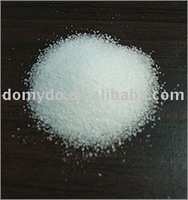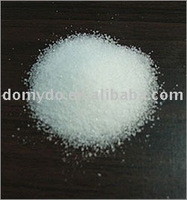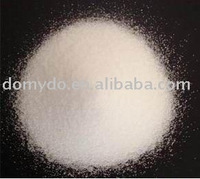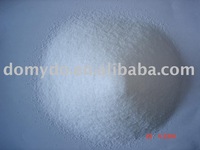
flocculant [Chinese name] Polyacrylamide Flocculant [English name] Polyacrylamide [Acronym] PAM.
flocculant
[Chinese name] Polyacrylamide Flocculant [English name] Polyacrylamide [Acronym] PAM.
[Molecular formula] C3H5NOItem | Quality indicators | Experimental methods |
Appearance | White granules | Visual |
Molecular weight | 1000 | GB12005 |
Solid content % | ≥90 | GB12005 |
Residual monomer % | ≤0.05 | GB12005 |
Hydrolysis degree % | ≤3-30 | GB12005 |
Granularity (mesh) | 20-80 | GB12005 |
Water-soluble (h) | ≤1.0 | GB12005 |
Product features: Anionic polyacrylamide (APAM) the appearance of white powder, molecular weight from 6000000-25000000 good water solubility, the ratio can be arbitrary and does not dissolve in water dissolved in organic solvents. The PH value of the effective range of 7-14, in the neutral alkaline medium showed the characteristics of high-polymer electrolyte, and electrolyte salt sensitive, with high-priced metal ions can be crosslinked into insoluble gel.
Packaging and storage: This product is non-toxic, pay attention to moisture, rain and avoid sun exposure. Storage life: 2 years, 25kg /50kg bag (lined with plastic bags).
Uses: Industrial wastewater treatment: For the suspended particles than that at high concentrations, particles with positive electric charge, water's PH value is neutral or alkaline water, iron and steel plant waste water, waste water from electroplating factories, metallurgical wastewater, such as coal washing waste water sewage treatment , the best. Drinking water treatment: water plant in our country a lot of water from rivers, sediment and mineral content was high, relatively turbid, though, after precipitation filtration, still can not meet the requirement, the need for flocculant dosage, dosage of inorganic flocculants 1 / 50, but the effect is several times more inorganic flocculants, organic pollution for the river water can be serious and I Inorganic Flocculant Cationic Polyacrylamide companies used better. Starch ethanol plants and the loss of plant starch lees recovery: It is now a lot of starch factory wastewater containing starch, many are now adding anionic polyacrylamide, starch particles flocculation sedimentation, and then filter sediments by pressure filtration into Pie can be used for feed, ethanol plants may also have recourse to alcohol anionic polyacrylamide dehydration, filter press to initiate a recall
flocculant









